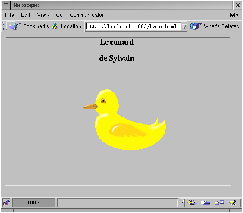
Figure 21.1: communication between a browser and an Objective CAMLserver



In this section we will define a server for the HTTP protocol. We will not handle the entire specification of the protocol, but instead will limit ourselves to those functions necessary for the implementation of a server that mimics the behavior of a CGI application.
Figure 21.1: communication between a browser and an Objective CAMLserver
# exceptionHttp_errorofstring;;exception Http_error of string
# letrecrep_xcodesi=letxs="0x00"inString.blits(i+1)xs22;String.setsi(char_of_int(int_of_stringxs));String.blits(i+3)s(i+1)((String.lengths)-(i+3));String.sets((String.lengths)-2)'\000';Printf.printf"rep_xcode1(%s)\n"s;;val rep_xcode : string -> int -> unit = <fun>
# exceptionEnd_of_decodeofstring;;exception End_of_decode of string
# letdecodes=tryfori=0topred(String.lengths)domatchs.[i]with'+'->s.[i]<-' '|'%'->rep_xcodesi|'\000'->raise(End_of_decode(String.subs0i))|_->()done;swithEnd_of_decodes->s;;val decode : string -> string = <fun>
# moduleString_plus=structletprefixsn=tryString.subs0nwithInvalid_argument("String.sub")->sletsuffixsi=tryString.subsi((String.lengths)-i)withInvalid_argument("String.sub")->""letrecsplitcs=tryleti=String.indexscinlets1,s2=prefixsi,suffixs(i+1)ins1::(splitcs2)withNot_found->[s]letunsplitcss=letfs1s2=matchs2with""->s1|_->s1^(Char.escapedc)^s2inList.fold_rightfss""end;;
# letget_field_pairs=matchString_plus.split'='swith[n;v]->n,v|_->raise(Http_error("Bad field format : "^s));;val get_field_pair : string -> string * string = <fun>
# letget_form_contents=letss=String_plus.split'&'sinList.mapget_field_pairss;;val get_form_content : string -> (string * string) list = <fun>
# letget=letbuff_size=2555inletbuff=String.createbuff_sizein(funic->String.subbuff0(inputicbuff0buff_size));;val get : in_channel -> string = <fun>
# letquery_stringhttp_frame=tryleti0=String.indexhttp_frame' 'inletq0=String_plus.prefixhttp_framei0inmatchq0with"GET"->beginleti1=succi0inleti2=String.index_fromhttp_framei1' 'inletq=String.subhttp_framei1(i2-i1)intryleti=String.indexq'?'inletq1=String_plus.prefixqiinletq=String_plus.suffixq(succi)inArray.of_list(q0::q1::(String_plus.split' '(decodeq)))withNot_found->[|q0;q|]end|_->raise(Http_error("Unsupported method: "^q0))withe->raise(Http_error("Unknown request: "^http_frame));;val query_string : string -> string array = <fun>
# letget_query_stringic=lethttp_frame=geticinquery_stringhttp_frame;;val get_query_string : in_channel -> string array = <fun>
# moduleText_Server=Server(structtypet=stringletto_stringx=xletof_stringx=xend);;
# moduleP_Text_Server(P:PROTOCOL)=structmoduleInternal_Server=Server(P)classhttp_servletnnpfun_serv=object(self)inherit[P.t]Internal_Server.servernnpmethodreceive_hfd=letic=Unix.in_channel_of_descrfdininput_lineicmethodprocessfd=letoc=Unix.out_channel_of_descrfdin(tryletrequest=self#receive_hfdinletargs=query_stringrequestinfun_servocargs;withHttp_errors->Printf.fprintfoc"HTTP error : %s <BR>"s|_->Printf.fprintfoc"Unknown error <BR>");flushoc;Unix.shutdownfdUnix.SHUTDOWN_ALLendend;;
Finally, we write the primary function to launch the service and construct an instance of the class http_servlet.
# moduleSimple_http_server=P_Text_Server(structtypet=stringletof_stringx=xletto_stringx=xend);;
# letcgi_like_serverport_numfun_serv=letsv=newSimple_http_server.http_servletport_num3fun_servinsv#start;;val cgi_like_server : int -> (out_channel -> string array -> unit) -> unit =<fun>
# letsend_fileocf=letic=open_in_binfintrywhiletruedooutput_byteoc(input_byteic)donewithEnd_of_file->close_inic;;val send_file : out_channel -> string -> unit = <fun>
# letsimple_servocargs=tryArray.iter(funx->print_string(x^" "))args;print_newline();send_fileocargs.(1)with_->Printf.printf"error\n";;val simple_serv : out_channel -> string array -> unit = <fun>
# letrunn=cgi_like_servernsimple_serv;;val run : int -> unit = <fun>
4003 launches this servlet on port 4003. In
addition, we launch a browser to issue a request to load the page
baro.html on port 4003. The figure 21.2 shows the
display of the contents of this page in the browser.The browser has sent the request
Figure 21.2: HTTP request to an Objective CAML servlet
GET /baro.html to load the page, and
then the request GET /canard.gif to load the image.
mail_addr, email_addr and
fees_state. In the last case, we will also transmit two character
strings containing the desired dates. These two dates correspond to the values
of the fields start and end on an HTML form.<HTML> <TITLE> association </TITLE> <BODY> <HR> <H1 ALIGN=CENTER>Association</H1> <P> <HR> <UL> <LI>List of <A HREF="http://freres-gras.ufr-info-p6.jussieu.fr:12345/mail_addr"> mail addresses </A> <LI>List of <A HREF="http://freres-gras.ufr-info-p6.jussieu.fr:12345/email_addr"> email addresses </A> <LI>State of received fees<BR> <FORM method="GET" action="http://freres-gras.ufr-info-p6.jussieu.fr:12345/fees_state"> Start date : <INPUT type="text" name="start" value=""> End date : <INPUT type="text" name="end" value=""> <INPUT name="action" type="submit" value="Send"> </FORM> </UL> <HR> </BODY> </HTML>We assume that this page is contained in the file
assoc.html.We will assume that these utilities are provided by the module Html_frame.
# class(oc0:out_channel)=object(self)valoc=oc0methodflush()=flushocmethodstr=Printf.fprintfoc"%s"methodpageheader(body:unit->unit)=Printf.fprintfoc"<HTML><HEAD><TITLE>%s</TITLE></HEAD>\n<BODY>"header;body();Printf.fprintfoc"</BODY>\n</HTML>\n"methodp()=Printf.fprintfoc"\n<P>\n"methodbr()=Printf.fprintfoc"<BR>\n"methodhr()=Printf.fprintfoc"<HR>\n"methodhr()=Printf.fprintfoc"\n<HR>\n"methodhis=Printf.fprintfoc"<H%d>%s</H%d>"isimethodh_centeris=Printf.fprintfoc"<H%d ALIGN=\"CENTER\">%s</H%d>"isimethodformurl(form_content:unit->unit)=Printf.fprintfoc"<FORM method=\"post\" action=\"%s\">\n"url;form_content();Printf.fprintfoc"</FORM>"methodinput_text=Printf.fprintfoc"<INPUT type=\"text\" name=\"%s\" size=\"%d\" value=\"%s\">\n"methodinput_hidden_text=Printf.fprintfoc"<INPUT type=\"hidden\" name=\"%s\" value=\"%s\">\n"methodinput_submit=Printf.fprintfoc"<INPUT name=\"%s\" type=\"submit\" value=\"%s\">"methodinput_radio=Printf.fprintfoc"<INPUT type=\"radio\" name=\"%s\" value=\"%s\">\n"methodinput_radio_checked=Printf.fprintfoc"<INPUT type=\"radio\" name=\"%s\" value=\"%s\" CHECKED>\n"methodoption=Printf.fprintfoc"<OPTION> %s\n"methodoption_selectedopt=Printf.fprintfoc"<OPTION SELECTED> %s"optmethodselectnameoptionsselected=Printf.fprintfoc"<SELECT name=\"%s\">\n"name;List.iter(funs->ifs=selectedthenself#option_selectedselseself#options)options;Printf.fprintfoc"</SELECT>\n"methodoptionsselected=List.iter(funs->ifs=selectedthenself#option_selectedselseself#options)end;;
# letprint_error:Html_frame.print)s=letprint_body()=print#strs;print#br()inprint#page"Error"print_body;;val print_error : Html_frame.print -> string -> unit = <fun>
# letprint_lines:Html_frame.print)ls=letprint_linel=print#strl;print#br()inList.iterprint_linels;;val print_lines : Html_frame.print -> string list -> unit = <fun>
# letprint_mail_addressesdb=print#page"Mail addresses"(fun()->print_lines(Assoc.mail_addressesdb));;val print_mail_addresses : Html_frame.print -> Assoc.data_base -> unit =<fun>
# letprint_email_addressesdb=print#page"Email addresses"(fun()->print_lines(Assoc.email_addressesdb));;val print_email_addresses : Html_frame.print -> Assoc.data_base -> unit =<fun>
# letprint_fees_statedbd1d2=letls,t=Assoc.fees_statedbd1d2inletpage_body()=print_linesls;print#str("Total : "^(string_of_floatt));print#br()inprint#page"State of received fees"page_body;;val print_fees_state :Html_frame.print -> Assoc.data_base -> string -> string -> unit = <fun>
# letprint_get_answerqdb=matchq.(1)with|"/mail_addr"->print_mail_addressesdb|"/email_addr"->print_email_addressesdb|"/fees_state"->letnvs=get_form_contentq.(2)inletd1=List.assoc"start"nvsandd2=List.assoc"end"nvsinprint_fees_statedbd1d2|_->print_error("Unknown request: "^q.(1));;val print_get_answer :Html_frame.print -> string array -> Assoc.data_base -> unit = <fun>
# letprint_answerqdb=trymatchq.(0)with"GET"->print_get_answerqdb|_->print_error("Unsupported method: "^q.(0))withe->lets=Array.fold_right(^)q""inprint_error("Something wrong with request: "^s);;val print_answer :Html_frame.print -> string array -> Assoc.data_base -> unit = <fun>
# letget_port_num()=if(Array.lengthSys.argv)<2then12345elsetryint_of_stringSys.argv.(1)with_->12345;;val get_port_num : unit -> int = <fun>
# letmain()=letdb=Assoc.read_base"assoc.dat"inletassoc_answerocq=print_answer(newHtml_frame.printoc)qdbinServlet.cgi_like_server(get_port_num())assoc_answer;;val main : unit -> unit = <fun>
httpassoc.ml. The file ends with a call to the
function main:
main() ;;We can then produce an executable named
assocd using the compilation
command:
ocamlc -thread -custom -o assocd unix.cma threads.cma \
gsd.cmo servlet.cmo html_frame.cmo string_plus.cmo assoc.cmo \
httpassoc.ml -cclib -lunix -cclib -lthreads
All that's left is to launch the server, load the HTML page2 contained in the file
assoc.html given at the beginning of this section (page
??), and click.The browser establishes an initial connection with the servlet, which sends it the menu page. Once the entry fields are filled in, the user sends a new request which contains the data entered. The server decodes the request and calls on the association database to retrieve the desired information. The result is translated into HTML and sent to the client, which then displays this new page.
Figure 21.3: HTTP request to an Objective CAML servlet


